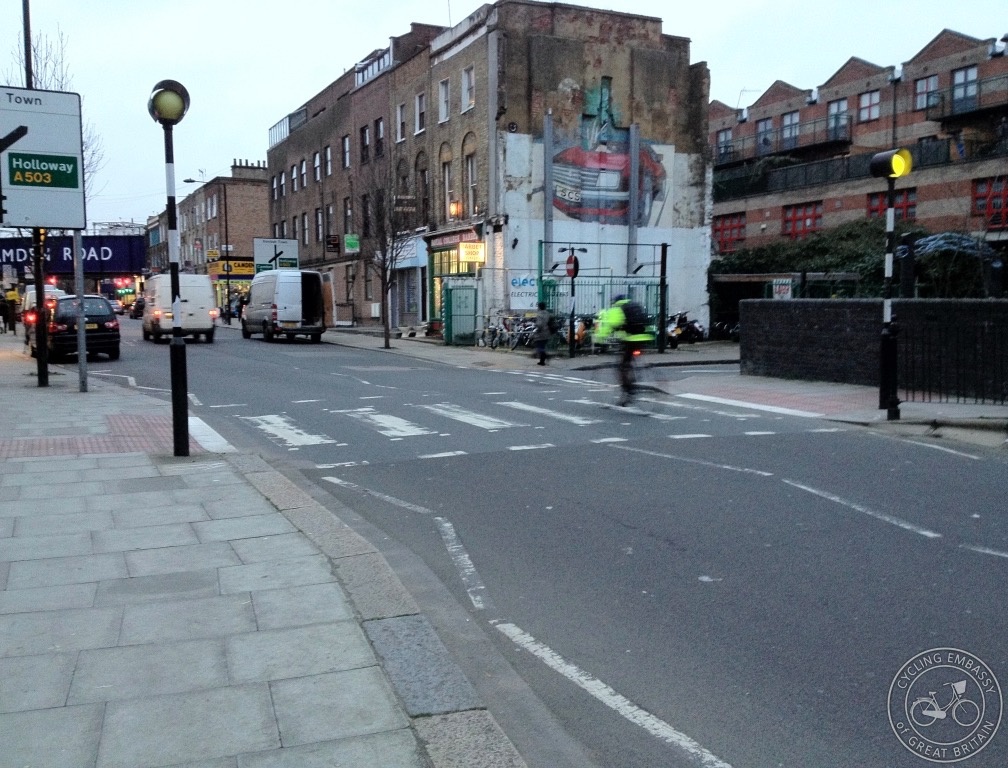Zebra crossing
A controlled pedestrian crossing, with black and white stripes on the road running across the pedestrian walking line. Belisha beacons accompany zebra crossings, on top of black and white striped posts, and flash yellow. Pedestrians have priority once they are on the crossing (however the Highway Code - somewhat confusingly - states that pedestrians should not step onto the crossing until all approaching vehicles have stopped).

Zigzag markings (at most eight zigzags) must be provided on the approaches and exits of the crossing, to provide a 'controlled area' where waiting, loading and overtaking is prohibited. The number of zigzags can be redued to two (but no less) where a local authority considers it necessary - but not to allow parking or loading near the crossing (which would reduce visibility).
Manual for Streets 2 has this to say on zebra crossings -
Zebra crossings offer the greatest advantage to pedestrians as they give them priority over all other traffic. In some authorities there has been a move away from providing zebra crossings towards signalised crossings, on the basis that they represent an ‘upgrade’ but this is not necessarily the case. Research carried out in London found that it was not possible to ascribe a safety benefit directly to the conversion of zebra crossings to pelicans
However zebra crossings should only generally be used on roads with 30mph limits, or lower.
